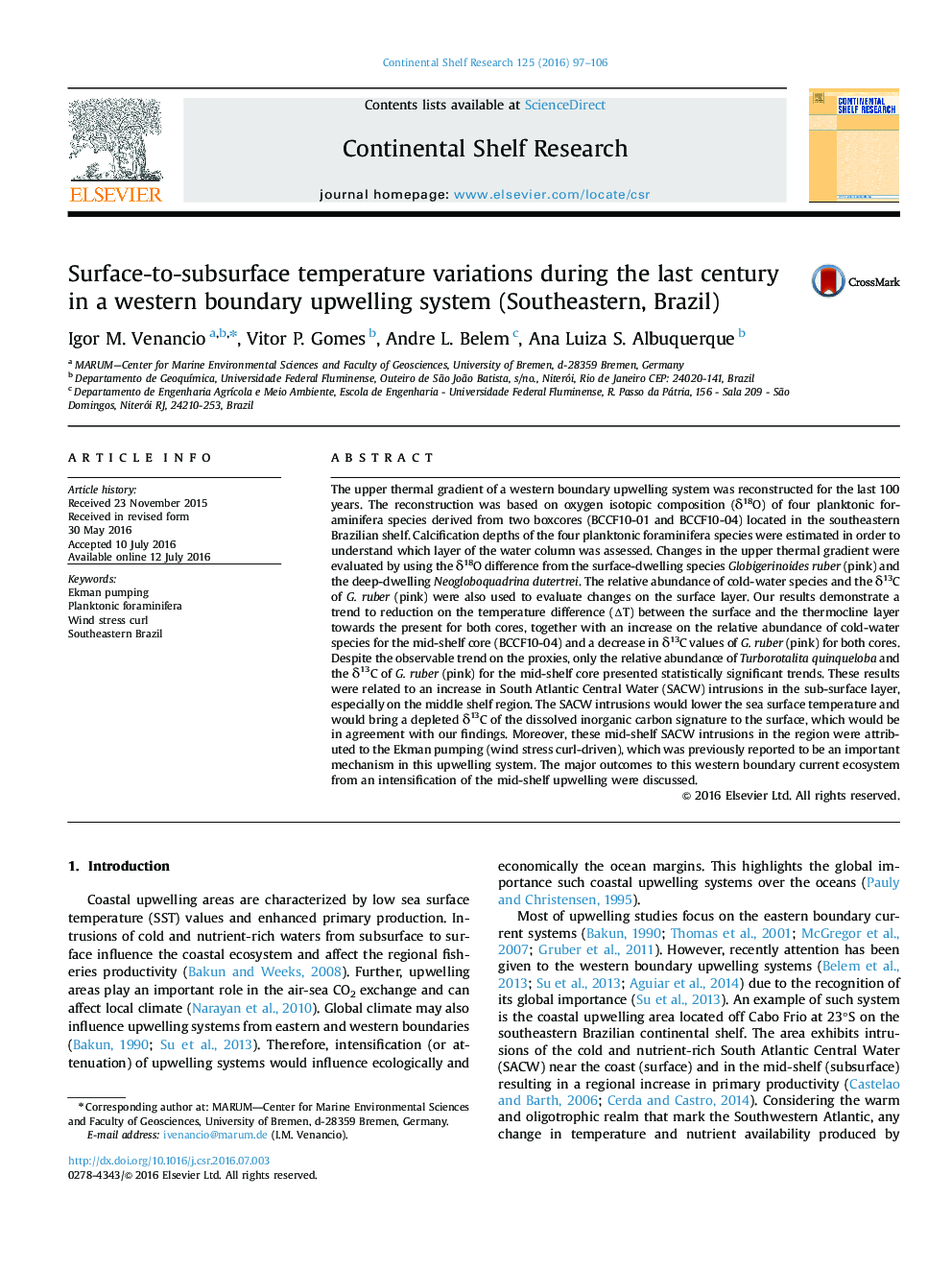| کد مقاله | کد نشریه | سال انتشار | مقاله انگلیسی | نسخه تمام متن |
|---|---|---|---|---|
| 4531579 | 1626088 | 2016 | 10 صفحه PDF | دانلود رایگان |
• Calcification depths were estimated for four species of planktonic foraminifera.
• ∆δ18O between Globigerinoides ruber pink and Neogloboquadrina dutertrei was used as a proxy for reconstruction of the upper thermal gradient.
• Trends in our proxies suggest an intensification of this western boundary upwelling system for the last 100 years.
The upper thermal gradient of a western boundary upwelling system was reconstructed for the last 100 years. The reconstruction was based on oxygen isotopic composition (δ18O) of four planktonic foraminifera species derived from two boxcores (BCCF10-01 and BCCF10-04) located in the southeastern Brazilian shelf. Calcification depths of the four planktonic foraminifera species were estimated in order to understand which layer of the water column was assessed. Changes in the upper thermal gradient were evaluated by using the δ18O difference from the surface-dwelling species Globigerinoides ruber (pink) and the deep-dwelling Neogloboquadrina dutertrei. The relative abundance of cold-water species and the δ13C of G. ruber (pink) were also used to evaluate changes on the surface layer. Our results demonstrate a trend to reduction on the temperature difference (∆T) between the surface and the thermocline layer towards the present for both cores, together with an increase on the relative abundance of cold-water species for the mid-shelf core (BCCF10-04) and a decrease in δ13C values of G. ruber (pink) for both cores. Despite the observable trend on the proxies, only the relative abundance of Turborotalita quinqueloba and the δ13C of G. ruber (pink) for the mid-shelf core presented statistically significant trends. These results were related to an increase in South Atlantic Central Water (SACW) intrusions in the sub-surface layer, especially on the middle shelf region. The SACW intrusions would lower the sea surface temperature and would bring a depleted δ13C of the dissolved inorganic carbon signature to the surface, which would be in agreement with our findings. Moreover, these mid-shelf SACW intrusions in the region were attributed to the Ekman pumping (wind stress curl-driven), which was previously reported to be an important mechanism in this upwelling system. The major outcomes to this western boundary current ecosystem from an intensification of the mid-shelf upwelling were discussed.
Journal: Continental Shelf Research - Volume 125, 15 August 2016, Pages 97–106
